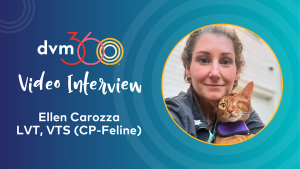- News
- Programs
- Fetch
- Flex CE
- Publications
- Webinars
- Business
- Partners
- Awards
- Shop
- Subscribe
- Anesthesia
- Anesthesiology & Pain Management
- Animal Welfare
- Aquatic Medicine
- Avian & Exotic
- Behavior
- Dentistry
- Dermatology
- Diagnostics
- Emergency & Critical Care
- Equine Medicine
- Feline Medicine
- Food Animals
- Geriatric & Palliative Medicine
- Infectious Diseases & Epidemiology
- Integrative & Holistic Medicine
- Internal Medicine
- Livestock
- Nutrition
- One Health
- Ophthalmology
- Orthopedics
- Pain Management
- Parasitology
- Pharmacology
- Preventive Medicine
- Rehabilitation
- Surgery
- Technology
- Toxicology
- Zoo Medicine













